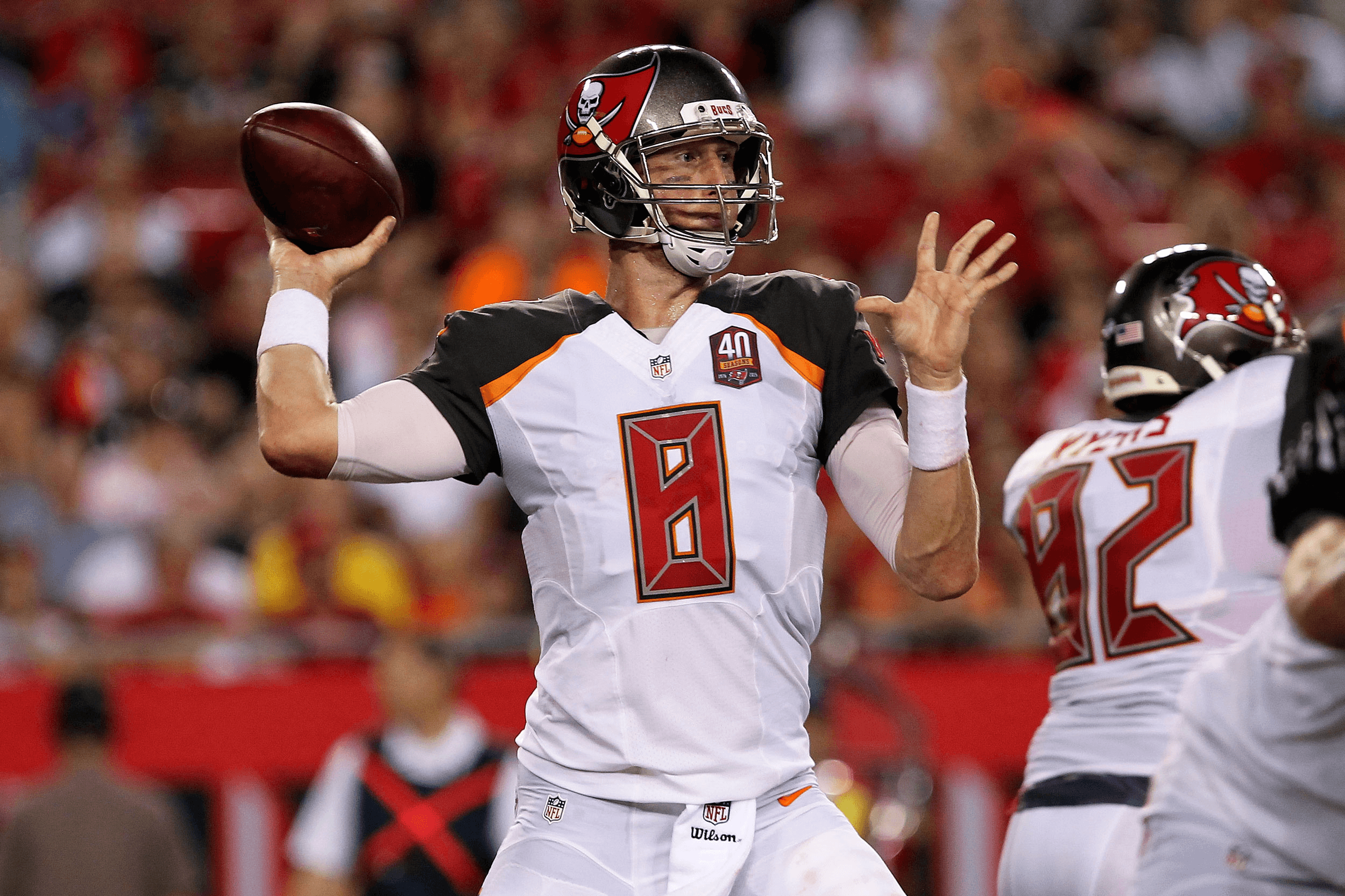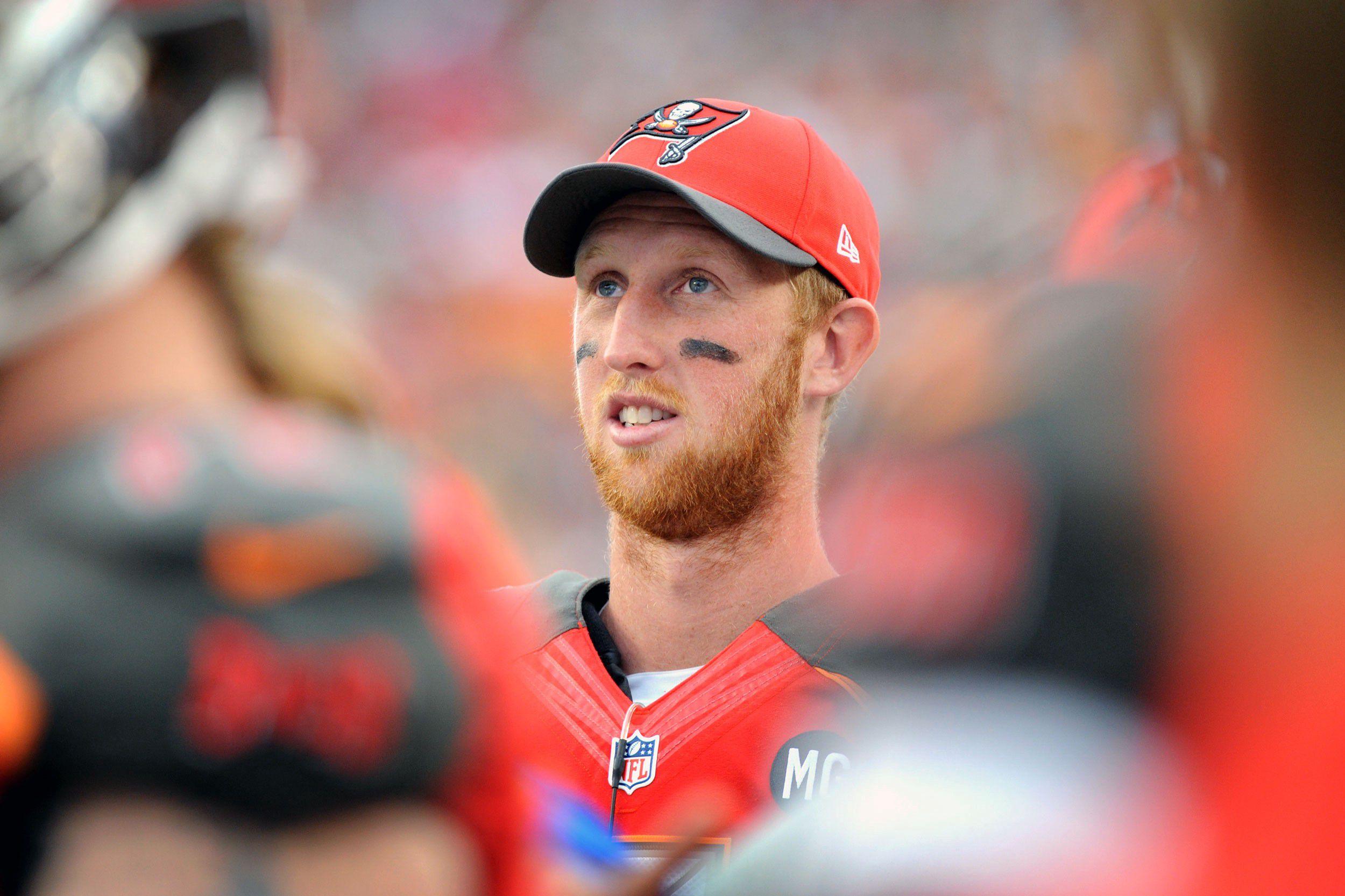
Honesty is important, so I want you all to know that even though this is for my job, I’m writing this mostly to sort through my emotions. The Bears — a franchise that I continue to root for, despite my better judgment — have reportedly signed former Bucs quarterback and human tree Mike Glennon to a three-year, $45 million deal that includes $19 million guaranteed.
Before we proceed, go ahead and get your jokes out of the way. Yes, paying $15 million a year for a quarterback with a sub–60 percent completion rate and a 5–13 record as a starter sounds like the worst idea in the world. Sure, handing a bridge deal to Brian Hoyer (if he were open to staying in Chicago) for something close to the reported two-year, $12 million contract that he’ll sign with San Francisco may have been a more sensible move. We get it, the 6-foot-7 Glennon looks like the dude from Napoleon Dynamite. All of these things are more or less true. But let’s dig a little deeper.

As with any NFL contract, the $45 million figure is meaningless. The $19 million is all Glennon will definitely receive. That’s a lot of money no matter how you slice it, but it also means this three-year deal is essentially a one-year contract. And while a potential $15 million salary in 2017 may seem pricey by quarterback standards, it isn’t. The annual average value of Glennon’s deal places him behind nearly every starting QB in football who’s on a second contract. Among the passers slated to be starters next fall, only Hoyer and Cleveland’s Robert Griffin III will make less on non-rookie deals. Based on reports that most of the other QB-needy teams had dropped out of the mix to land Glennon earlier in the week, it’s possible the Bears could have gotten him for less. Aside from trotting out a rookie, though, they didn’t have many cheaper options at the position.
Beyond the financial elements of the deal, it’s also worth considering the optics. Bringing back Hoyer (again, if he even would have been willing to return) would have delivered a clear message to fans that the franchise is running in place. As general manager Ryan Pace navigates the rest of the market — following Jay Cutler’s release and Glennon’s deal, the Bears will have about $50 million left in cap room to improve the roster, particularly in the secondary — maintaining a bit of continuity under center wouldn’t have been the worst outcome. But Chicago has 14 wins in Pace’s three seasons (and nine wins in John Fox’s two years as head coach); there’s undoubtedly some urgency among both the front office and coaching staff to show ownership that the team is moving forward.
From an on-field perspective, there’s a chance that Glennon won’t be as effective as Hoyer (67 percent completion rate, 7.2 yards per attempt, six touchdowns, and no interceptions in five starts) was last season, but that isn’t the point. Hoyer is a solid option and a shrewd choice by the 49ers, yet he’s also 31 and the most known commodity imaginable. While the Glennon signing is not going to light the Bears’ fan base aflame, the franchise can at least push the idea that it went searching for a quarterback with an undefined ceiling. Glennon was far from a disaster during his 13 starts as a rookie in the 2013 campaign, and the Bucs liked him enough to rebuff previous potential trades and offer Glennon a contract that would have made him the highest-paid backup in football. It may sound like I’m grasping at straws, but the fact that the front office and coaching staff that knows Glennon best maintained high interest in him should say something.


No one is doing backflips outside Halas Hall because Glennon is now the Bears quarterback, but the realities of the NFL are such that teams lacking a world-altering passer have to find creative solutions. That’s how Chicago reached this point. This deal probably warranted some immediate snickering, but after breaking it down in the simplest terms, Pace handed an at-market, one-year deal to a 27-year-old QB with obvious tools. By not committing to Glennon long term, the Bears aren’t precluded from selecting a quarterback in the first two rounds of the upcoming draft, and they haven’t tied up so much of their cap space as to prevent them from adding a few more pieces before free agency ends. While this whole scenario is uninspiring, it’s easy to understand how it happened. The Bears, like many other franchises, know all too well that having to search for a QB savior isn’t a great situation to be in.